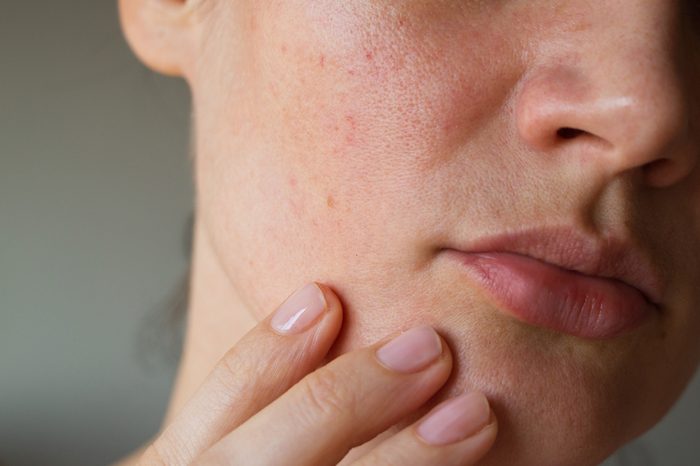
Dry, flaky skin or lips
This is a common warning sign of dehydration. It may also indicate a more serious problem that affects sweat gland function, such as hypothyroidism (marked by insufficient levels of thyroid hormone) or diabetes, says Roshini Raj, MD, assistant professor of medicine at the NYU School of Medicine and author of What the Yuck?! Other signs of hypothyroidism include feeling cold, weight gain, and fatigue. Diabetes symptoms include extreme thirst, frequent urination, and blurry vision. The symptom could also reflect eczema, psoriasis, dermatitis, or an allergic drug reaction.
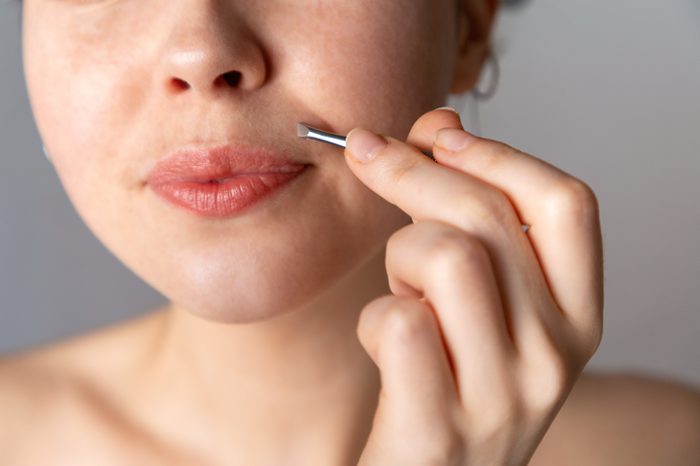
Excess facial hair
Unwanted hair, particularly along the jawline, chin, and upper lip, could be a symptom of polycystic ovary syndrome (PCOS), a hormone imbalance in which male hormone levels are elevated. The condition may affect five million U.S. women of childbearing age, according to the Centers for Disease Control and Prevention (CDC). Excess hair on your face doesn’t always mean something is wrong, though—it could just be a trait you inherited.
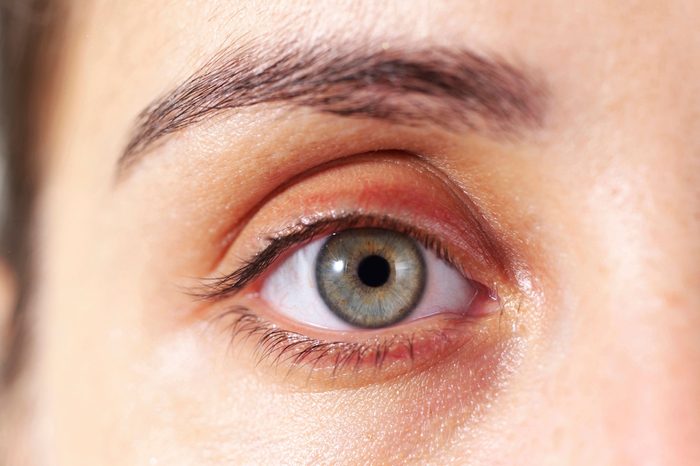
Soft, yellow spots on eyelids
Patients with these cholesterol-filled lesions, called xanthelasma, may have a higher risk of heart disease. A 2016 study published in Medical Principles and Practice found that subjects with xanthelasma had higher BMIs and total levels of cholesterol, thus putting them at great risk for a cardiac event.
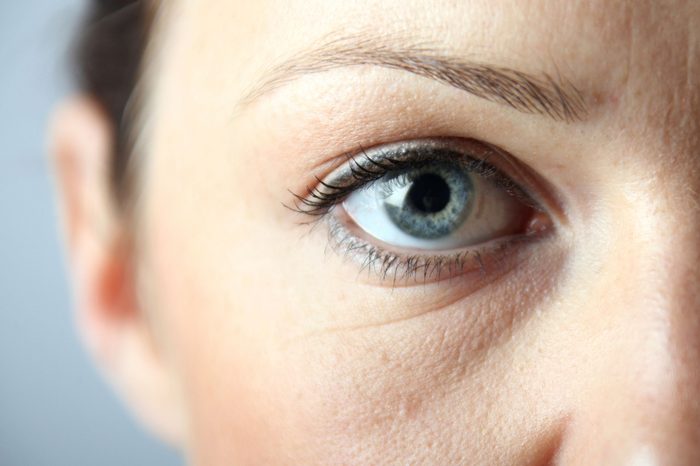
Eye bags and puffiness
Tired-looking eyes could be a red flag for chronic allergies, which dilate blood vessels and cause them to leak. In the sensitive skin under your eyes, this creates puffiness and a dark purple-blue hue, says Dr. Raj, who is also co-founder of the skincare company TULA. Other possible culprits are hypothyroidism and sleep apnea.
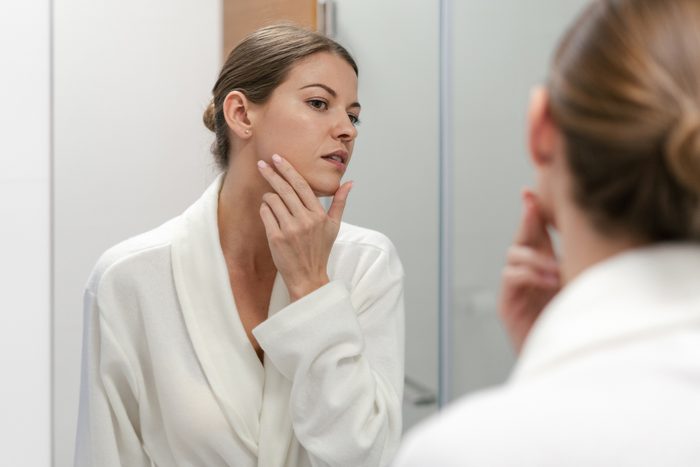
Facial asymmetry
This can be one of the first signs of a stroke, says Leana Wen, MD, an emergency physician at George Washington University and co-author of When Doctors Don’t Listen: How to Avoid Misdiagnoses and Unnecessary Tests. “Patients will often describe it like this: ‘I looked in the mirror, and my face looked different.’” You might also notice that one side of your face is numb or feel as if you can’t fully smile. Or you might have trouble speaking. Asymmetry could also be from Bell’s Palsy, but always rule out a stroke before investigating other causes. The key to treating a stroke is getting there fast. A stroke may also present with double vision and weakness in your arms or legs.
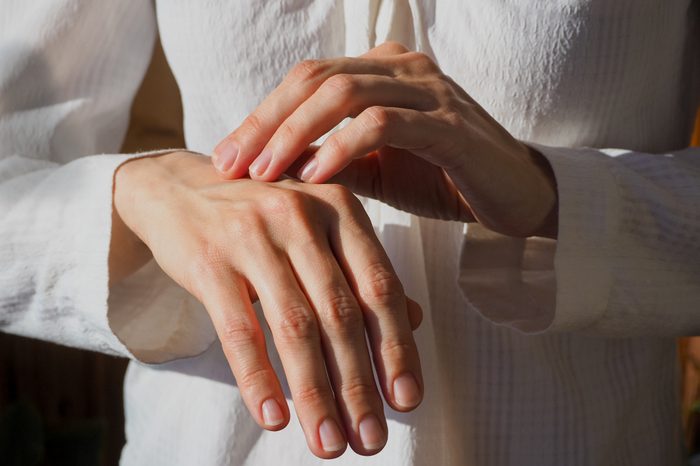
Discolored complexion
Even slight changes may indicate that something may be wrong. Paleness could be a sign of anemia. A yellow tone could indicate liver disease. A bluish tint in lips or nail beds could indicate heart or lung disease, says Mallika Marshall, MD, an internist and pediatrician at Massachusetts General Hospital.
The Differences Between Melasma, Sun Spots, and Other Skin Spots
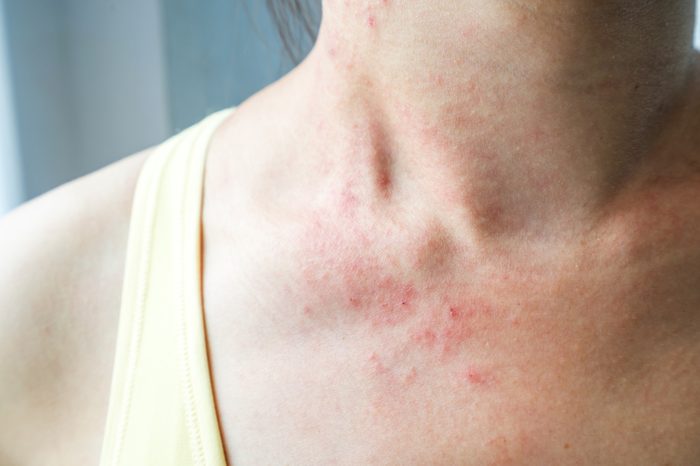
Rashes and blotches
Certain digestive problems may show up on skin, says Dr. Raj. Itchy clusters of red bumps could indicate celiac disease, an autoimmune disorder in which the body reacts to gluten. A butterfly-shaped rash across the cheekbones and over the bridge of the nose can be a sign of lupus, an autoimmune disease. Allergies, eczema and rosacea, and certain infections can also trigger facial rashes.

Hair loss
Losing your eyelashes or eyebrows could be a sign of alopecia areata, an autoimmune condition that attacks the hair follicles. “The disease can be limited to certain parts of the body, or could involve the entire body,” says Benjamin Bert, MD, an ophthalmologist at MemorialCare Orange Coast Medical Center in Fountain Valley, CA. “Around the eyes, the hair loss can include the eyelashes or the eyebrows.” Treatments are available, but unfortunately, a cure doesn’t exist.

New moles
Most moles typically aren’t a cause for concern. But to be safe, any new growths or moles on the skin should be checked out by your dermatologist, advises Dr. Raj. They could be skin cancer and, in some cases, are also a sign of internal disease or a genetic syndrome.
